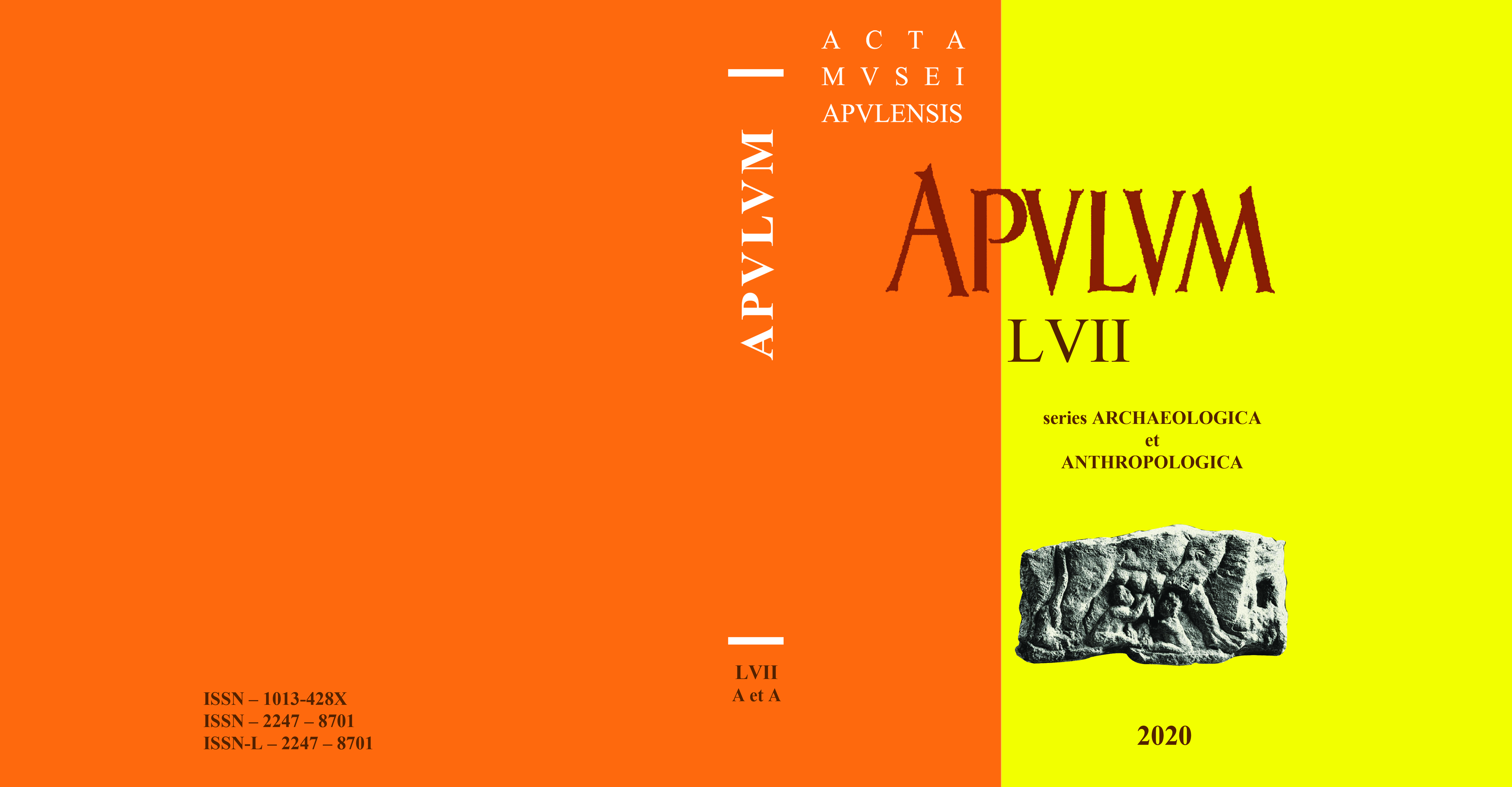O LOCUINȚĂ DIN EPOCA POST-ROMANĂ DESCOPERITĂ LA APULUM
A POST-ROMAN DWELLING FOUND AT APULUM
Author(s): Radu OtaSubject(s): History, Archaeology
Published by: Muzeul National al Unirii Alba Iulia
Keywords: bronze belt (cingulum) plate; double-sided bone comb;
Summary/Abstract: A seeming discovery of a dwelling from the post-Roman period, made in 2014, during some archaeological excavation at the construction of a house, determined me to bring to specialists’ attention a new circumstance triggered by the inventory found inside it. It is about a bronze belt plate, which was retrieved next to a fragment of double-sided bone comb from the same depth (-0,60 m). Following analysis of the main discoveries from the Rhine and Danube limes, I noticed that this type of pieces of military equipment was made primarily in the area of Lower Danube, being encountered throughout the IIIrd century AD, in Dacia not overriding the period when the province ran. Yet, the discovery of a whole piece, in a very good condition, next to a double-sided bone comb, in the hinterland of the second city from Apulum – municipium Septimium Apulense – more precisely in the extramuros area, determined me to reconsider dating of such a belt plate, as well as its usage period, as this type of comb, formed from three sheets fastened with bronze or iron rivets, is encountered in the Middle and Lower Danube limes, as well as Barbaricum , in the IVth-VIth centuries. Consequently, I believe that this belt plate would have been made in Dacia province, likely in a military workshop from Apulum, somewhere throughout the IIIrd century AD; yet, its usage by a descendant of a veteran or even civilian, the earliest after 271, or rather in the first decades of the IVth century, could be plausible. Therefore, we deal with the first documentation of using this type of belt plate, also after the Aurelian retreat. It shouldn’t be excluded that wearing such a clothing item to have offered a certain authority to the owner, at the same time, likely being an “heirloom”. This artefact might be a rare example of documentation on some pieces about which was known that the wearing period was long gone. I hope that future archaeological researches from the Roman military sites, where habitation also continued in the post-Roman period, even if obviously in modest forms, will bring more information on the period between the last decades of the IIIrd century AD and the first decades of the following one.
Journal: Apulum
- Issue Year: 57/2020
- Issue No: 1
- Page Range: 307-316
- Page Count: 10
- Language: Romanian
- Content File-PDF

